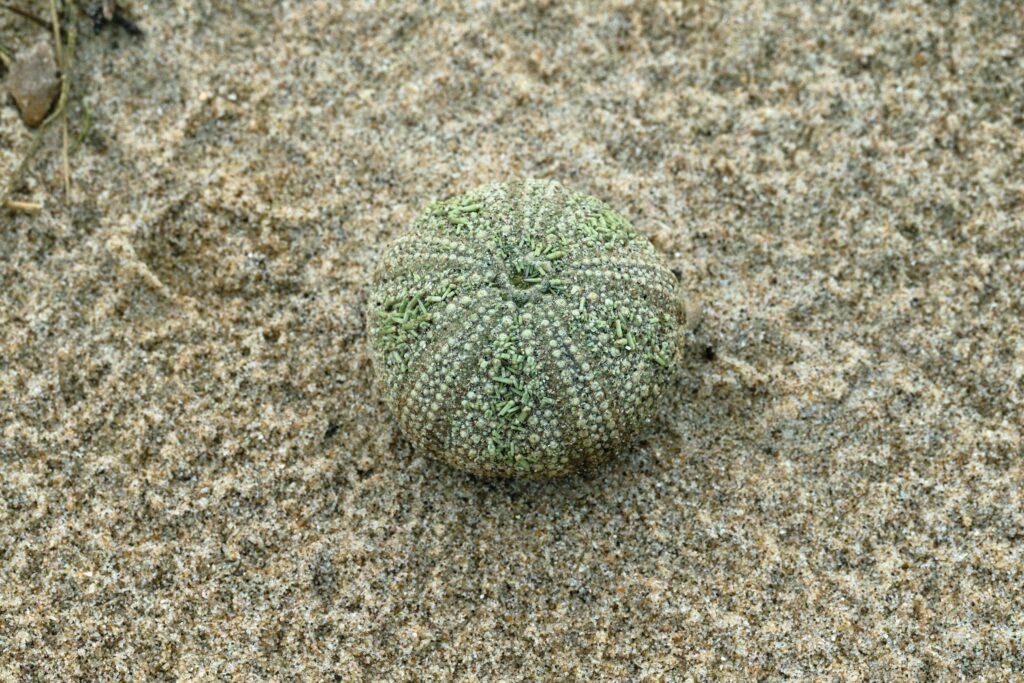Wrap up warm and visit a shore to search for the skeletal remains of sea urchins

BEACHCOMBING CAN BE A FRUITFUL AND mindful pastime at any time of year, but it’s in winter that the sea gives up many of its treasures. Among them are the skeletal remains of ancient invertebrates that have been on Earth for 540 million years – sea urchins. Several species, including green and common (edible) sea urchins, occur on British coasts. Their shell-like cases, called tests, are made mainly of calcium, arranged in plates to form a squashed sphere reminiscent of a satsuma.
In life, sea urchins are covered in spines like marine hedgehogs – Echinus, the genus to which they belong, comes from the Greek word for hedgehog – but these are lost when they die. Little white bumps cover the tests that wash up on shores, showing where the spines were attached. The soft organs have long since rotted away, leaving an empty container. Well, almost empty. If you pick a test up, it rattles, as the urchin’s hard teeth and jaws, used for grazing algae, are still trapped inside.